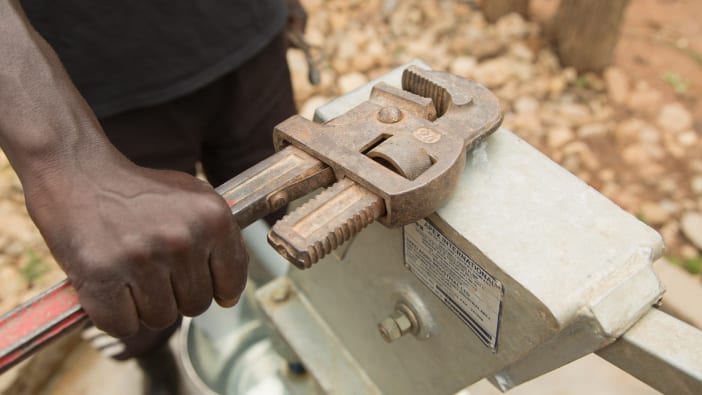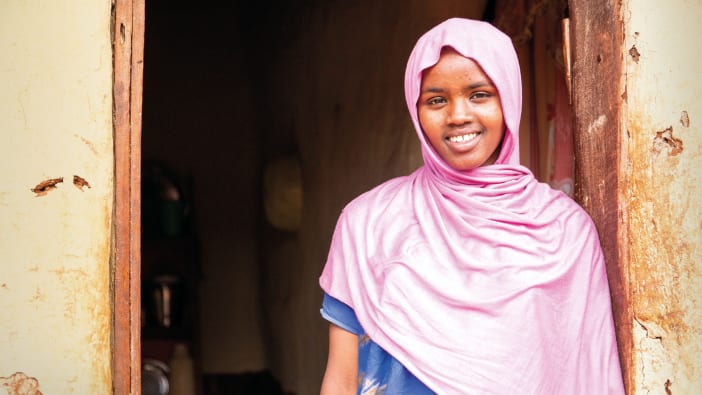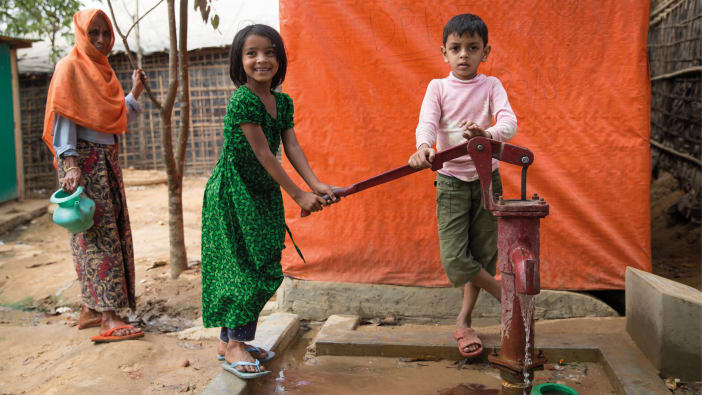Hand-dug wells and boreholes
Hand-dug wells are one obvious means of gaining access to ground water. The alternative is usually a deep borehole built by an expensive drilling rig. Most communities are unable either to have access or to afford a rig, unless they receive help from governments or NGOs. However, there is a new third alternative hand-drilled wells.
Small diameter shallow wells
These are usually just 15cm in diameter (compared with 1.2 metres or more for a hand-dug well), and up to 30 metres deep, similar to most hand-dug wells. Hand-drilled wells can be cheaper and are usually quicker to build than hand-dug wells. One advantage of a hand-dug well is that if the pump breaks down, people can still obtain water using a bucket and rope.
Any well, whether hand-dug, hand-drilled, or machine-drilled – involves three processes:
- loosening the ground
- removing the soil and rock
- supporting the walls of the hole.
Hand-drilled wells use a large drill called an auger to drill into the ground, supported by a metal frame. One great advantage of small diameter wells is that far less soil and rock has to be broken through and removed.
Energy
Three or four men building a hand-drilled well have less than 2% of the energy of a medium-sized drilling rig. If the drill has to break through rock, this may prove impossible with hand-drilling. Soft materials such as sand and silt require less energy, but may cause problems if the holes collapse.
Other issues
There are also wider issues for communities to consider when thinking about hand-drilling:
- Are there alternative water sources which could be protected?
- Can existing sources be improved?
- Is the geology suitable for hand-drilling?
- How will sites be chosen?
- How will communities be mobilised and involved?
- Who will pay for the wells?
- Who will construct the wells?
- Where will hand-drilling rigs be made?
- Will it be easy to get spare parts?
- Who will supply the linings and other construction materials for the wells?
- How much will the wells cost?
Recent work
These issues were explored during a recent three-year project in Uganda. This work looked into possible partnerships between government agencies, outside donors, commercial contractors and local communities.
The project developed new technology suitable for local conditions. They encouraged small contractors to adopt the technologies and begin the local manufacture of equipment. They found that with support from donors, govern-ment and communities it is possible to build partnerships between public sector, private sector and communities to improve rural water supplies. Whether this can really result in progress toward more affordable access to clean water still remains to be seen.
Dr Richard C Carter, Institute of Water and Environment, Cranfield University, Silsoe, Bedford, MK45 4DT, UK. E-mail: [email protected]










